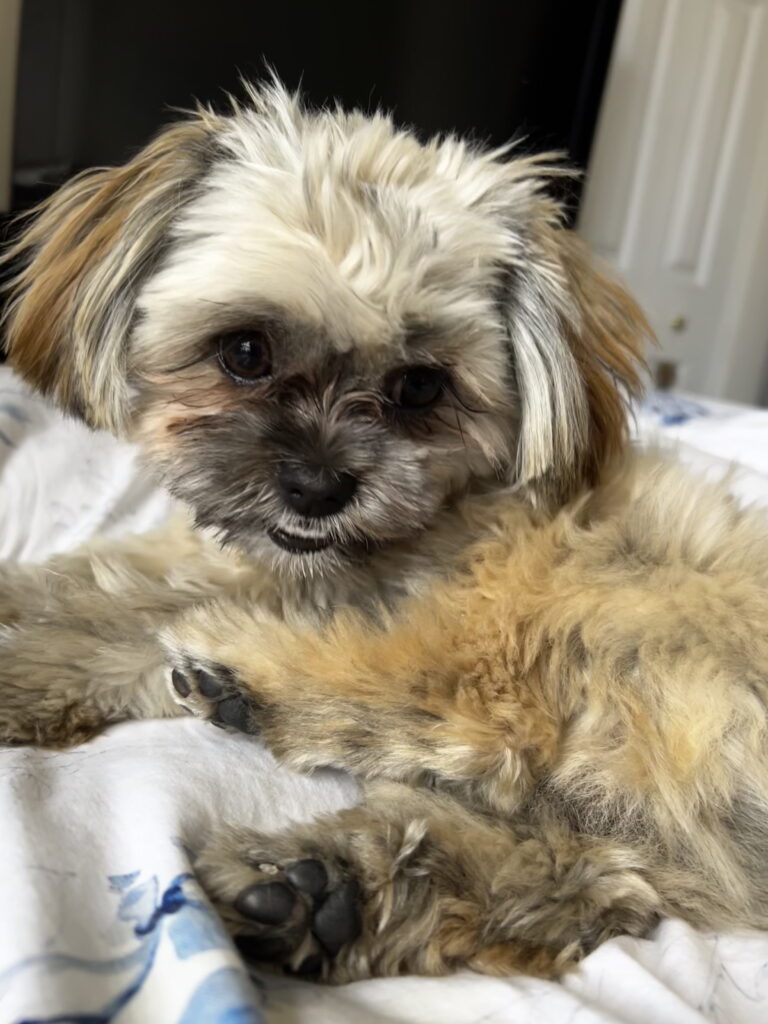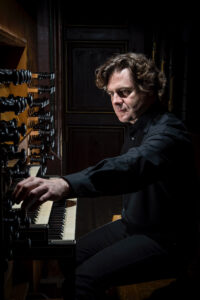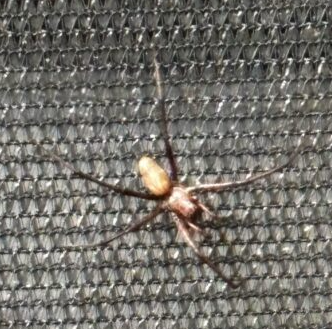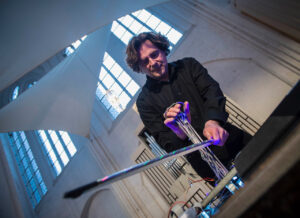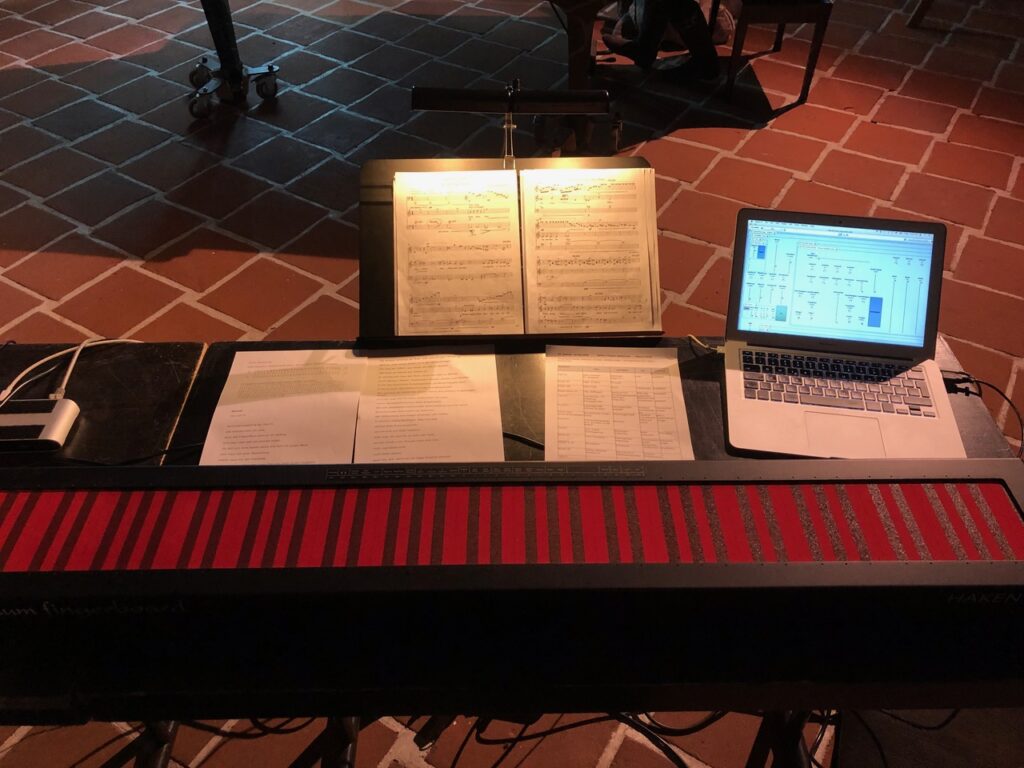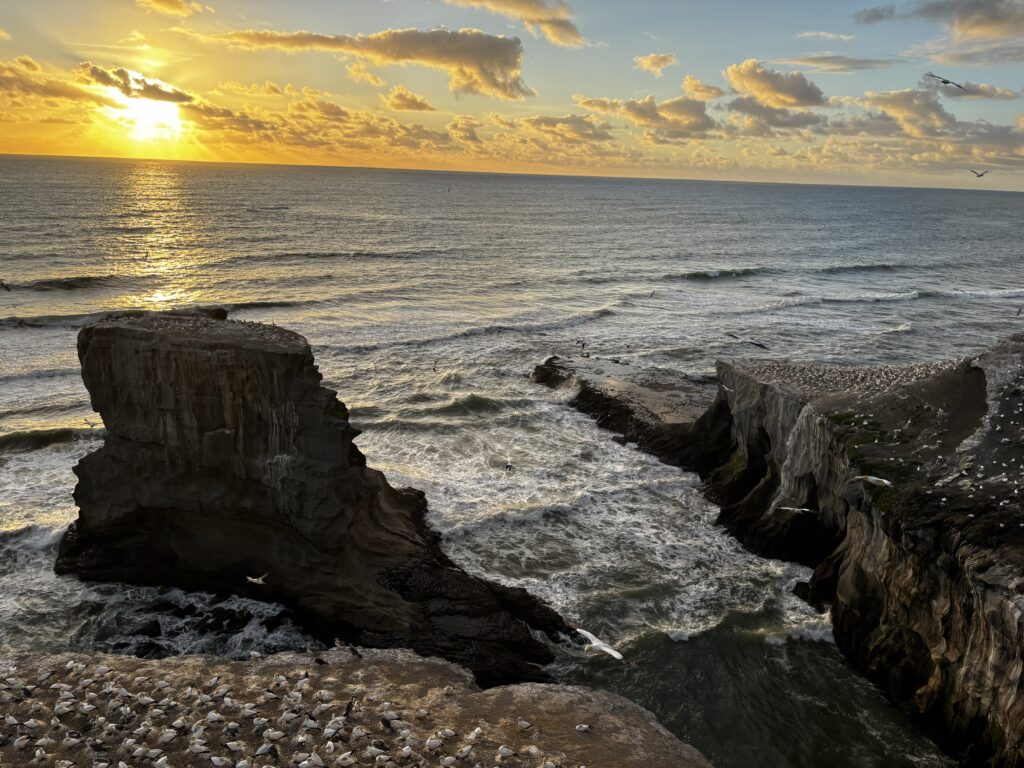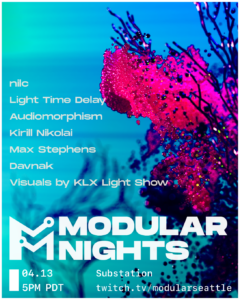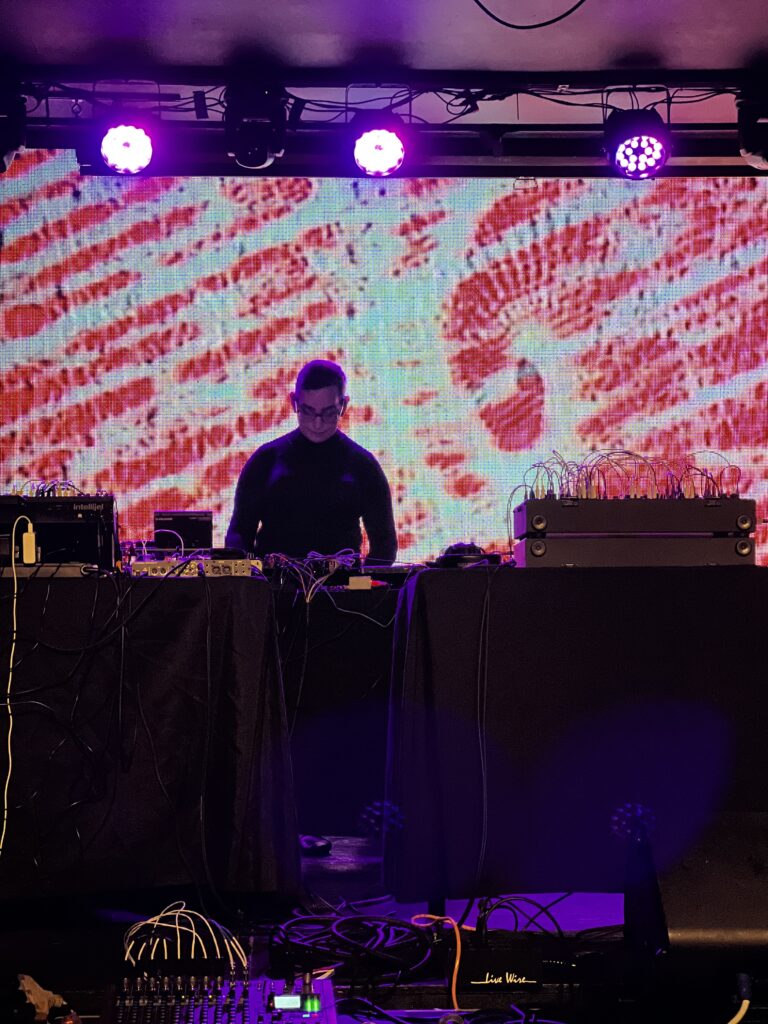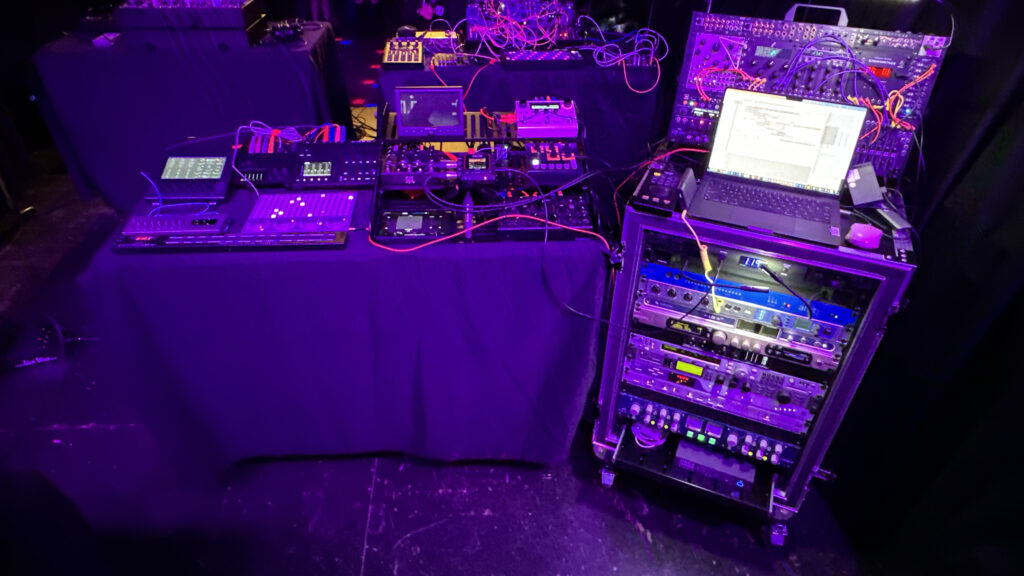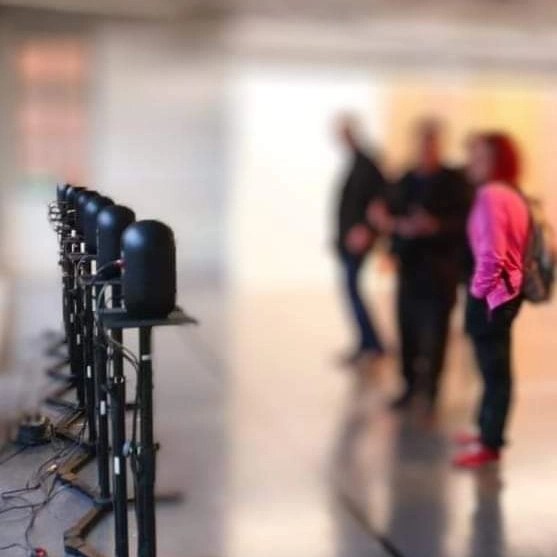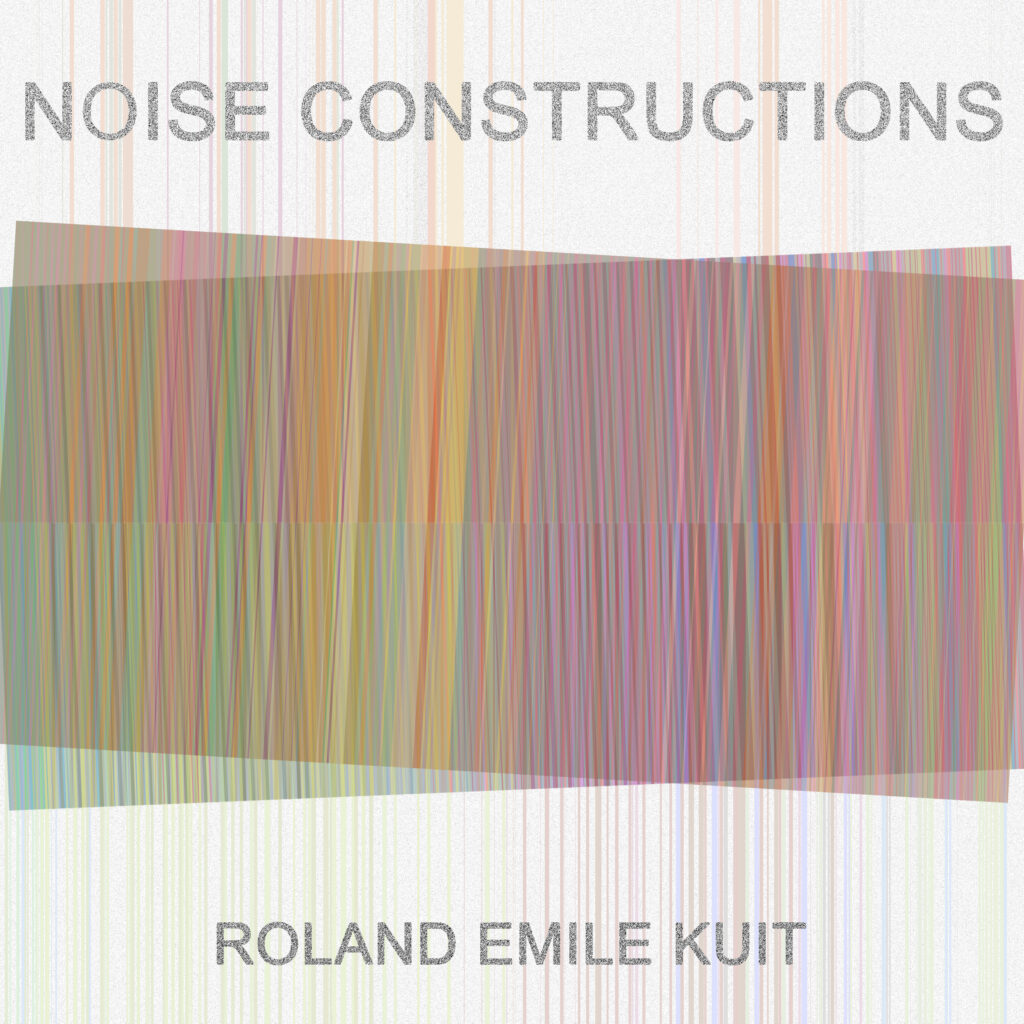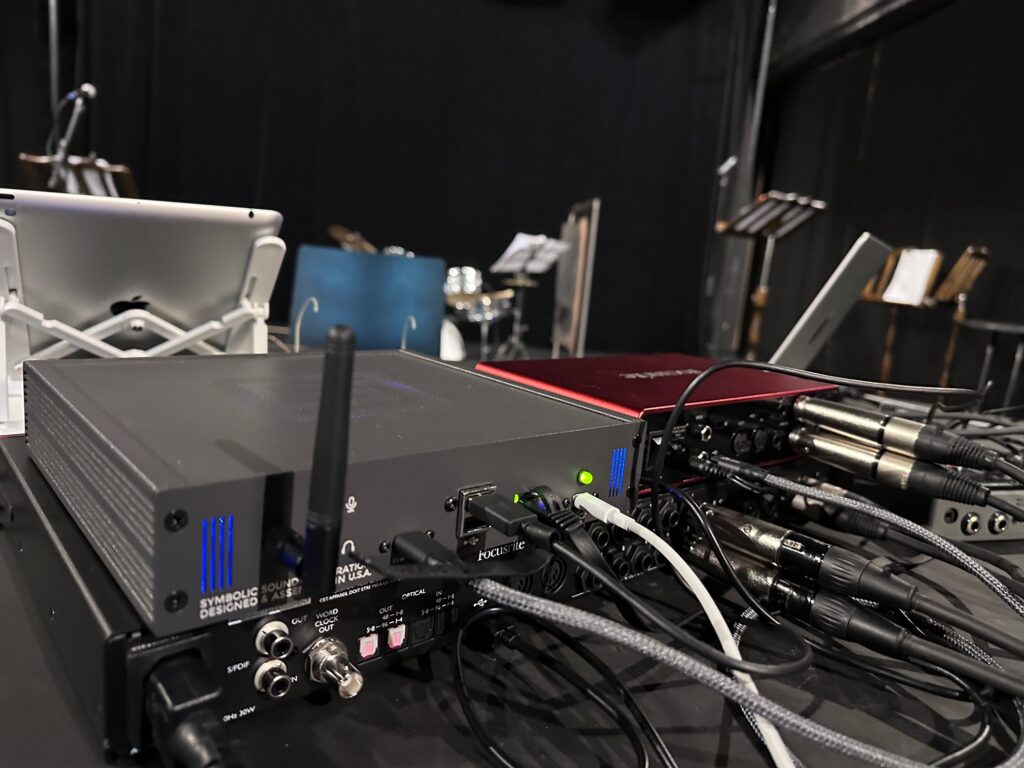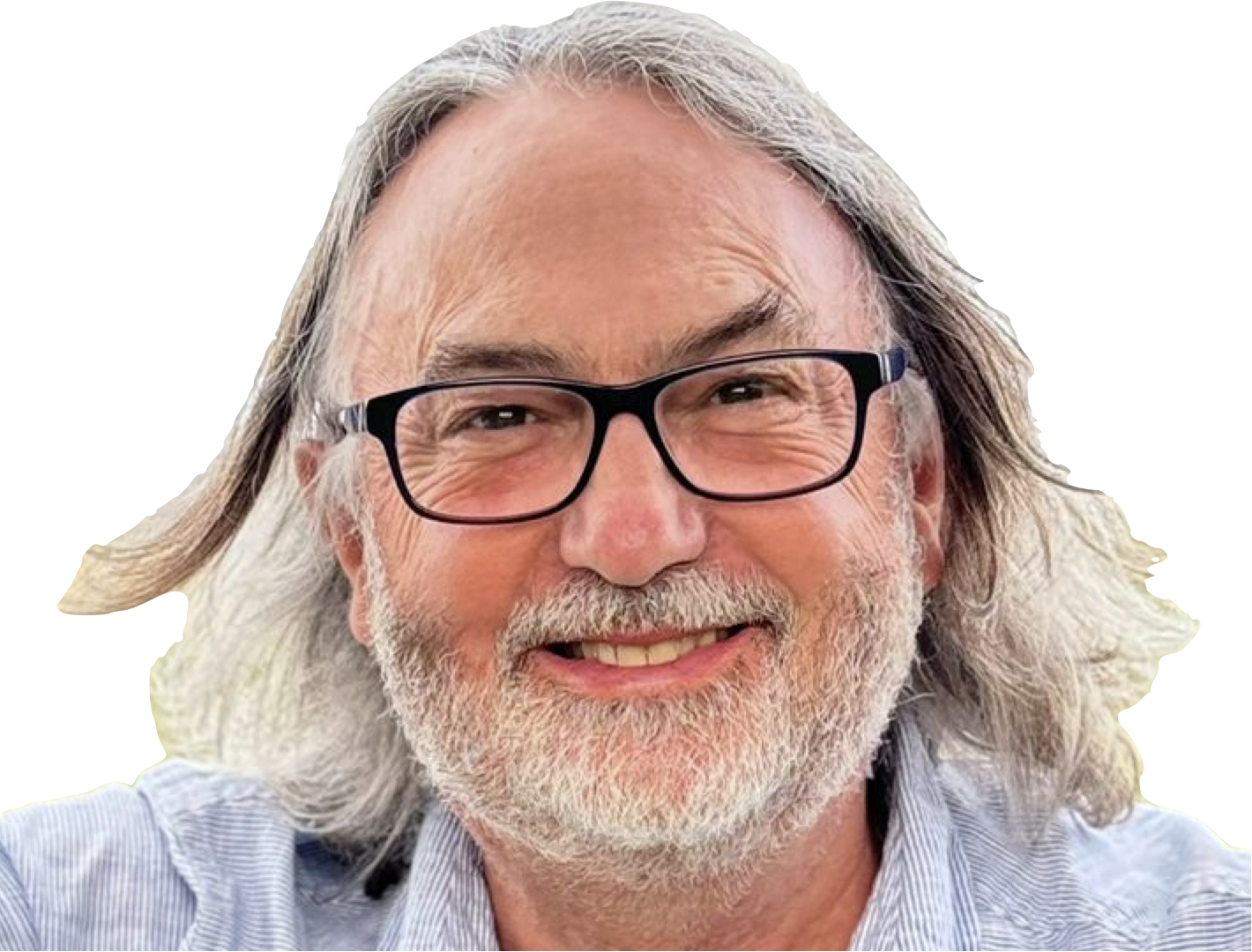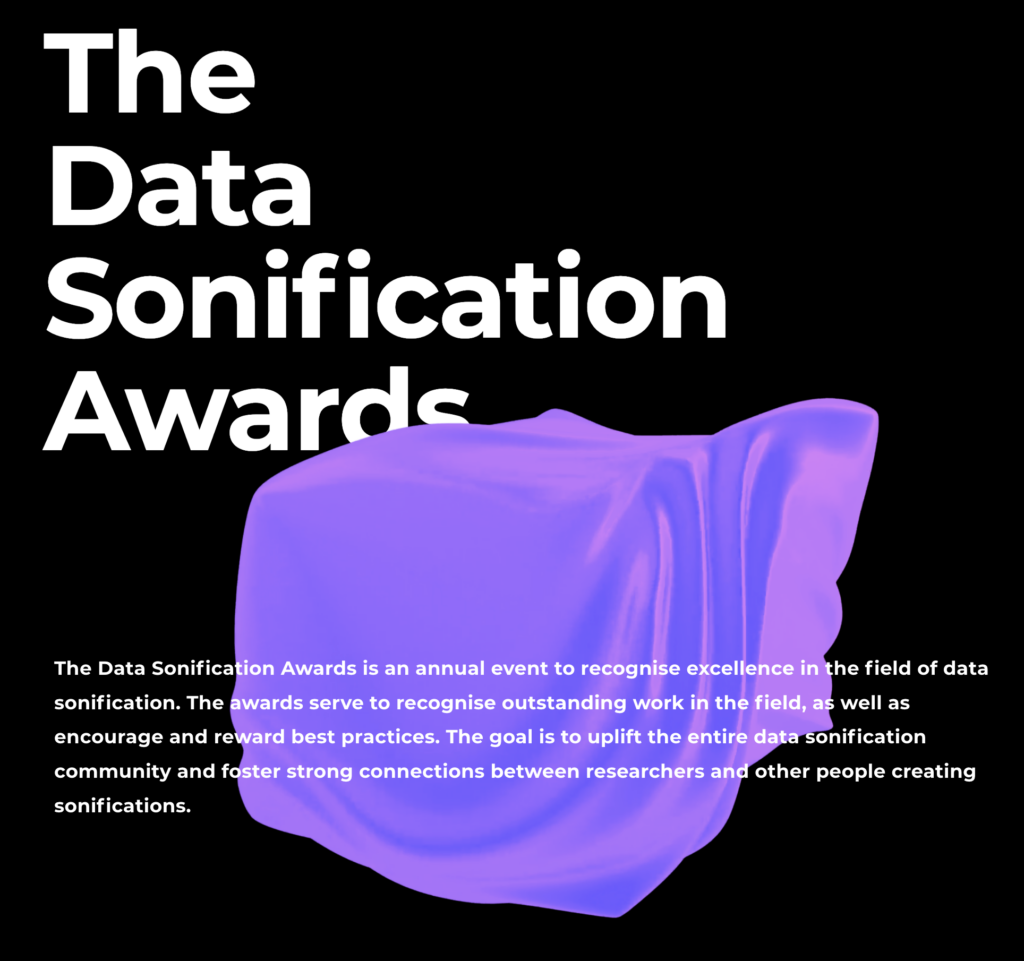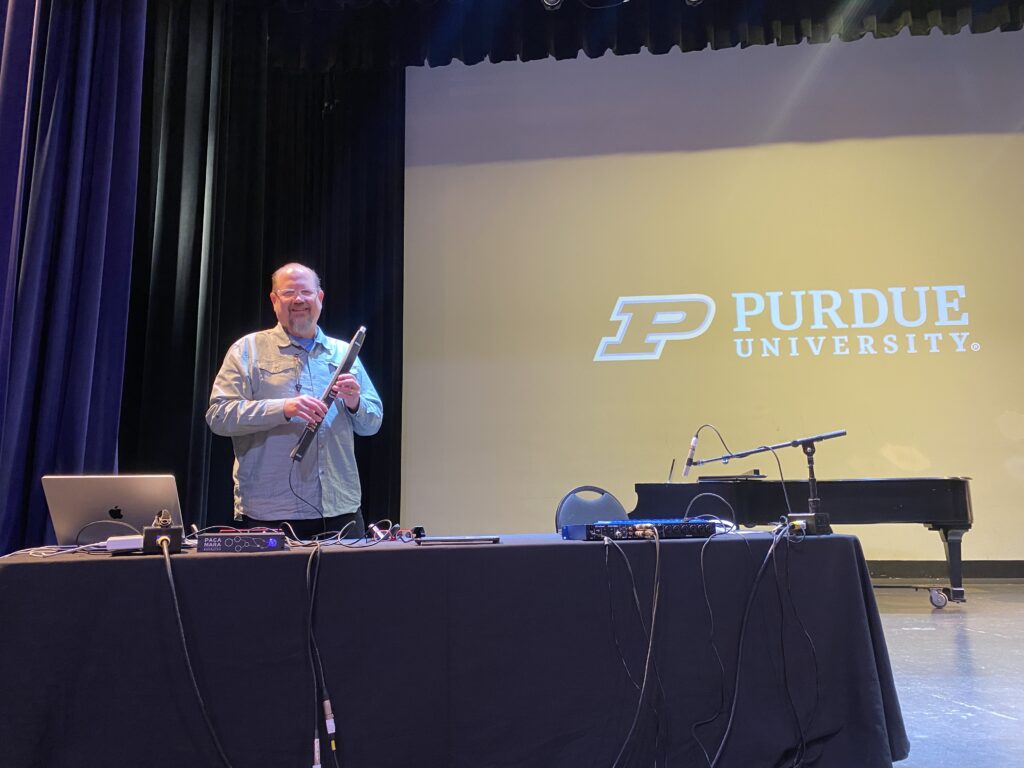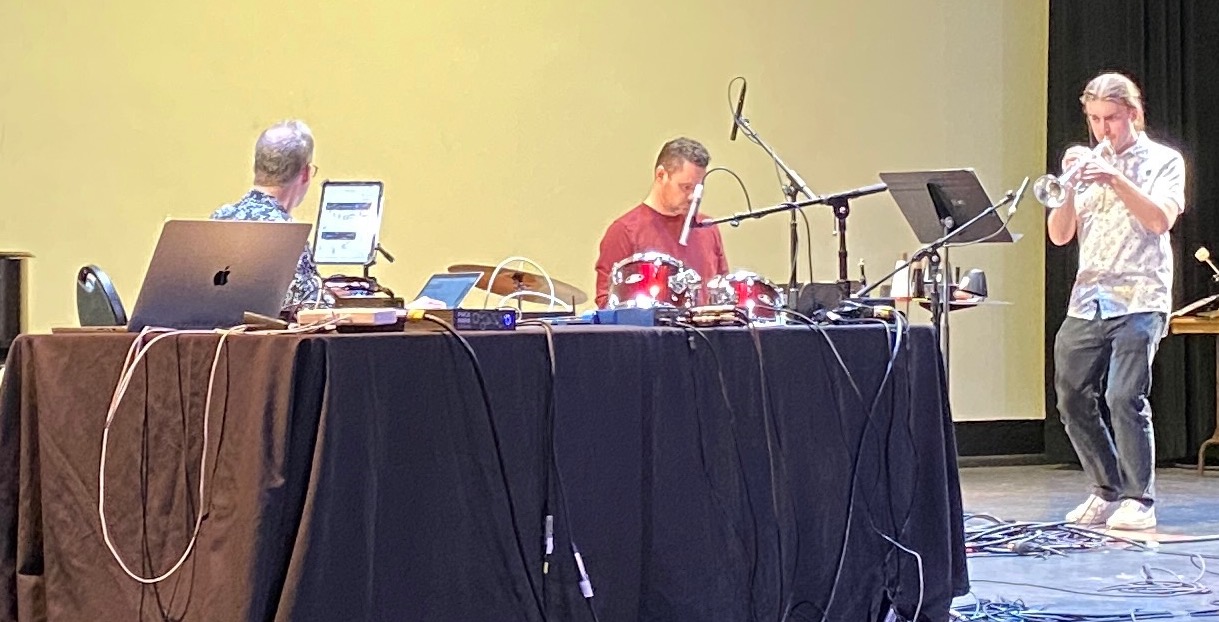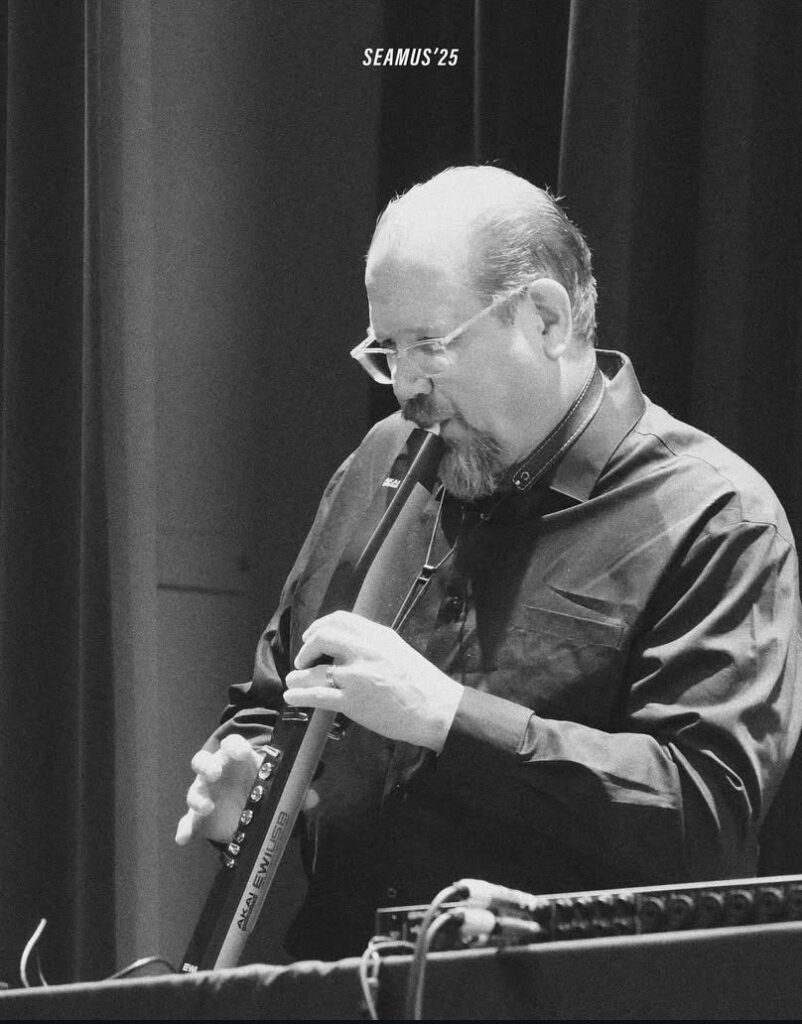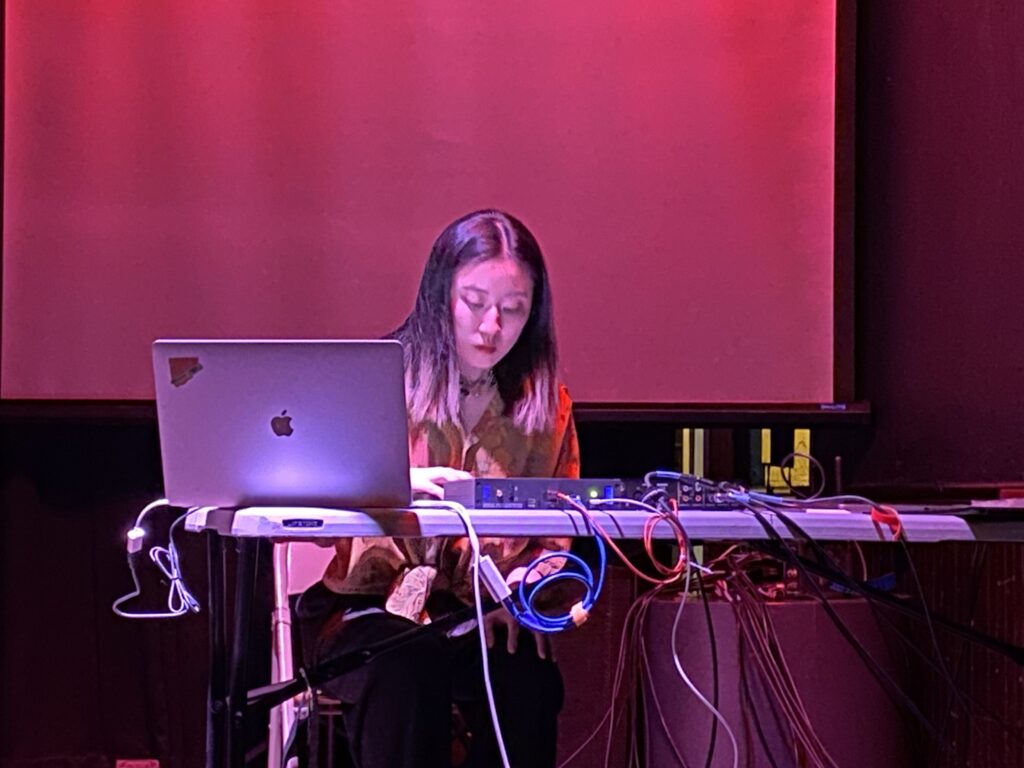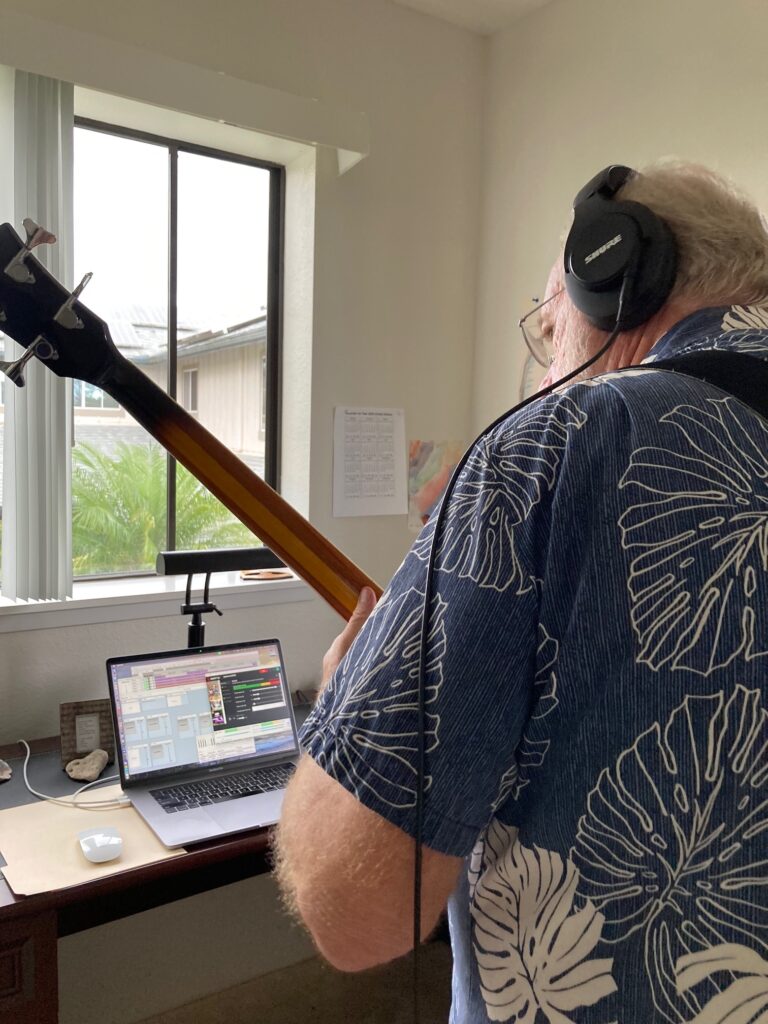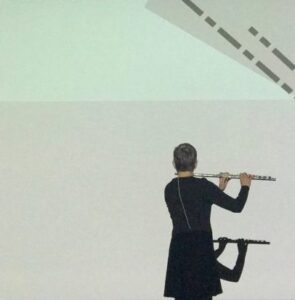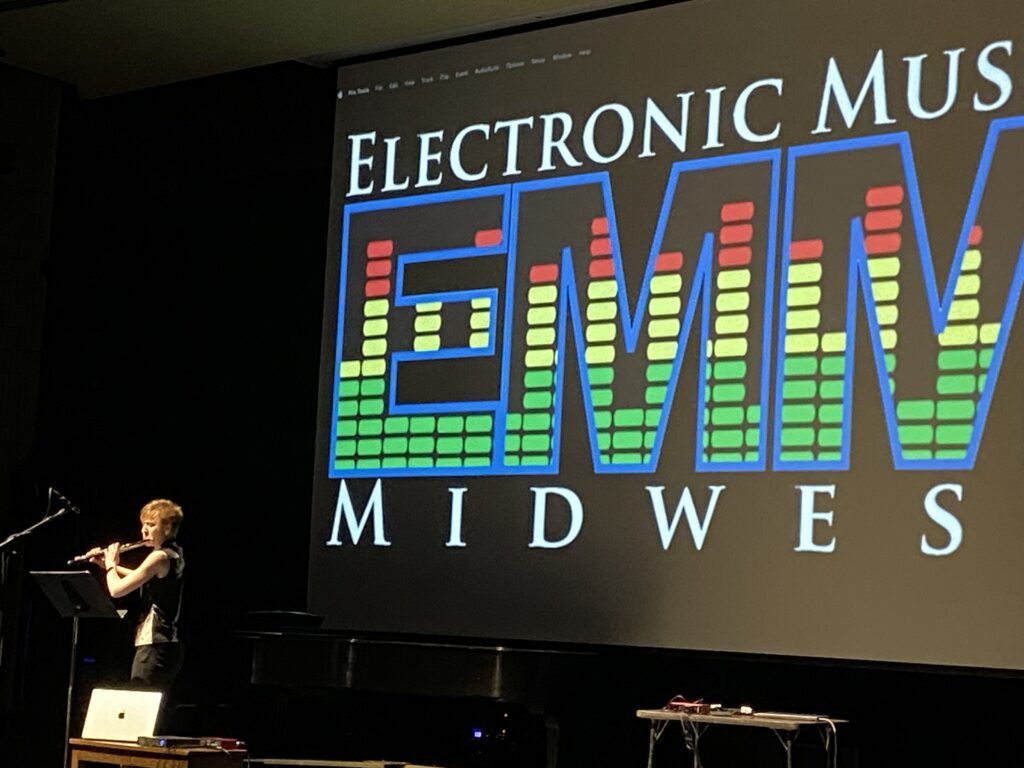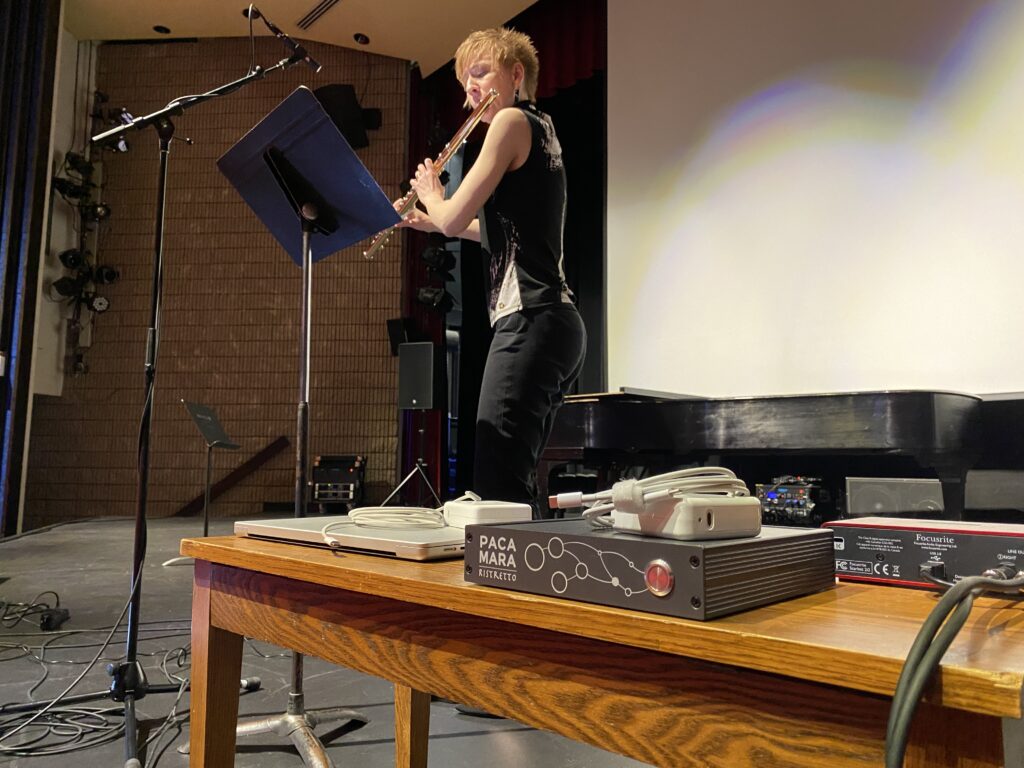It’s a question at the top of everyone’s mind recently: When your current situation feels broken, should you stay and try to fix it? Or should you go somewhere else and start fresh?
 We interviewed two Kyma artists — Andrea Young, professor of composition at University of Auckland in New Zealand. And Franz Danksagmüller, professor at the Musikhochschule Lübeck (MHL) in Germany and visiting professor at the Royal Academy of Music in London.
We interviewed two Kyma artists — Andrea Young, professor of composition at University of Auckland in New Zealand. And Franz Danksagmüller, professor at the Musikhochschule Lübeck (MHL) in Germany and visiting professor at the Royal Academy of Music in London.
Recently, Franz and Andrea were each (independently) recruited to join the faculty of a different university in another country. After much consideration, Franz chose to stay in his current position, and Andrea chose to travel halfway around the world to accept a new position. What factors entered into their decisions? In the interests of anonymity, let’s refer to the two options as the Stay option and the Go option.
[EN (Eighth Nerve)]: Thanks for talking with us, Andrea and Franz! From my outsider’s perspective, it looks like each of you made the optimal decision — without a doubt, your current professional situation appears brighter now than it did prior to your decision. Perhaps more importantly, your future prospects look more open and varied than they did before you faced this decision. To start off, what was the top non-financial factor motivating you to Stay?
FRANZ: For several years, I’ve been “shaping” my current position in a way that it matches with my principles as they have evolved over time: oriented to the future, shifting away from the main focus on historic music. I have introduced live electronics into our curriculum, and I’m also teaching Kyma right now. I can keep going further into this direction without having to build up to the position again from scratch. Furthermore, my workload has been reduced, making it possible for me to focus more on my artistic work and on education.
ANDREA: The best aspect of staying would have been that I could have continued my “whole life” as before, not just the job. That included my community of artists, collaborators, and routines in life. The job itself, though, was becoming somewhat of a routine – I could implement changes and personal progressions in each class that I was teaching – but as my teaching abilities and materials were becoming stronger after six years of development, it could become “easy to repeat”. This is the great thing about knowing the material well, but it is actually not what we hope for from our professors, which would be to be continue researching and achieving greater insights over time.
[EN]: What was the least appealing aspect of your Stay option?
FRANZ: Staying meant not being able to return to my “home town,” and not joining a larger faculty.
ANDREA: The worst aspect of staying was knowing that the university was on edge financially. Future opportunities were not a guarantee in this case, especially with the “potential” of permanence (tenure-track) also being a variable. Aspects of my knowledge and experience – things I could offer students – were not ever going to be on the table (such as teaching Kyma). Also the collegial environment was not how one would imagine or hope for in a university. There was an essence of feeling alone in an environment that could have been much more of a collective.
[EN]: Franz, you mentioned that your Go option would have meant returning to your home town. So evidently at some point in the past, you must have chosen to leave your home country for your current position. What motivated that decision?
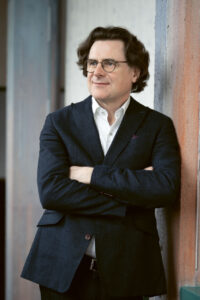 FRANZ: At the time, I was Domorganist [Cathedral Organist] and my sole responsibility was to make (traditional) music; I had a wonderful instrument there, and I had turned the organ loft into a studio space which I could use most of the time. However, the new position at MHL offered me more freedom, more time for my artistic work, and a more secular creative environment.
FRANZ: At the time, I was Domorganist [Cathedral Organist] and my sole responsibility was to make (traditional) music; I had a wonderful instrument there, and I had turned the organ loft into a studio space which I could use most of the time. However, the new position at MHL offered me more freedom, more time for my artistic work, and a more secular creative environment.
[EN]: Regarding the Go option. What was the most enticing aspect of the offer? What was less appealing than your current situation?
FRANZ: It would have been very appealing to work in a familiar surroundings, in a larger city with many inspiring artists.
 ANDREA: The enticing aspect of the offer was the nature of the people who interviewed me. I could sense they were like-minded. They had an exuberance and optimism that I could relate to! When I was honest and let my guard down about how I personally perceive learning, teaching and creativity, there seemed to be no need to explain further. We spoke the same language.
ANDREA: The enticing aspect of the offer was the nature of the people who interviewed me. I could sense they were like-minded. They had an exuberance and optimism that I could relate to! When I was honest and let my guard down about how I personally perceive learning, teaching and creativity, there seemed to be no need to explain further. We spoke the same language.
The financial aspect was more secure and also contained a pathway upwards. The salary also included my own research and creation, which is integral to who I am. Finally, I could put myself together into one envelope (be a teacher, compose music, attend conferences and festivals) instead of juggling all those lives in a constant state of temporal and financial mayhem! 🙂 The Go option also included a promise – that they would support me in teaching what I know best, which was that they would get Kyma in their studios. That was a breath of relief.
I was concerned about how far away I would have to go, it’s not easy to fly to various places for a gig or a show from the new location. Before I learned more about what that distance meant on more personal levels, the initial concern was that I would be disconnected from my community, and I would be far from my parents and family.
[EN]: About how long did you ponder (agonize over) the decision? Was it months? Weeks?
FRANZ: : It was about six months, going back and forth over all the options, consulting many people and experts.
ANDREA: In my situation, the decision was made immediately – yet it took some time for my visa to come through. Then, at the last minute, my previous institution contacted me with an agonizing, last minute opportunity. So it was really just weeks, where I re-questioned everything.
[EN]: Did you ask for input from colleagues, friends, family? If so, what was the most helpful piece of advice you received from them?
FRANZ: Yes, I asked many colleagues. Interestingly many of them questioned the benefit of changing my current position. In the end I followed the Heinz von Foerster quote: “Always act so as to increase the number of choices available.” I think, it’s a quote shown on startup of Kyma.
ANDREA: I did ask family, colleagues and friends. In general, the advice from friends and colleagues was to “play the game” – see what the results may or may not be… As always, with no guarantees..
However, the dominating advice that really “rang my bells,” came from the older people in that group – they advised: “Where will YOU learn the most? Where will YOU grow the most? What will YOUR life adventure be?
[EN]: Did you ask for advice from professional advisers (for example, tax advisers)?
FRANZ: I asked several professional advisers. Unfortunately none of them could tell me exactly what would be the consequences – it’s such a bureaucratic mess. There was one piece of advice they all had in common: my current position would be way better both financially and in terms of future retirement; changing my position would incur substantial disadvantages. I learned that EU professional retirement systems are more complex and varied than I initially thought, and that significantly complicates relocation between member states.
ANDREA: No, it was all moving too quickly…
[EN]: Did you use any tools like a pros and cons list? Did it help?
FRANZ: I used a pros and cons list.
ANDREA: Yes the pros and cons list was used; however there were so many variables and unknowns (what would it be like there, what would I miss if I didn’t go). After all the consolidation of advice from others, mixed with unknowns, it turned out that the overriding decision was made by how much I respected the people who hired me in the first place.
[EN]: Did your Stay option try to sweeten the deal or offer to make some changes in order to convince you to stay?
FRANZ: Yes, as soon as I told the staff here that I was considering an offer to leave, they immediately asked me what they could do to make me stay.
ANDREA: The Stay option was a strange experience. At the last moment, they created a new tenure-track position describing what I had been doing on a temporary basis – there were personal calls from people higher up in the system, secretaries and administrators offering me the materials I would need to apply, and committee members reaching out through messenger to encourage, and encourage again. I was caught like a deer in headlights – feeling the excitement of having been hired elsewhere and then a strange guilt to leave! And yet – while there was this incredible encouragement for the Stay option, there was always this “no guarantees”.
[EN]: Similarly, how did your Go option try to persuade you to leave your current situation to join them?
FRANZ: Some colleagues at the Go option tried to find a way to make it possible or attractive for me to take the new position. But the head of the institution there expressed understanding for why I might prefer to stay in my current position (based on prior experiences of others who faced the same dilemma).
ANDREA: I did not share this information [the last minute job announcement at my previous institution] with the people who had offered me the new position, because I had already accepted the new position at that point.
[EN]: What was the primary thing (or person) that tipped the balance in a positive way for you? (For example, was it a sense of being truly valued by colleagues? Was it an offer of more time for your professional creative work? Was it an agreement to support professional activities like concerts or festivals?)
FRANZ: It was a combination: the offer [from my current institution] of more time for my creative work and less administrative work in combination with a remark by the head of the “new” institution, that they could not make me an adequate offer.

ANDREA: At the end of all the qualms, there were three things that tipped the scale:
First, the sense of being truly valued by colleagues in the Go option was impactful. This was expressed to me repeatedly – they were so excited by my portfolio and teaching experience, they expressed that I was on the top of the list during the whole process. There is much about me (my diverse practice as composer-performer alternating between acoustic and electronics) that isn’t always a fit in other institutions. Suddenly I felt that this was exactly what they were looking for. Not a common experience, in my world!
Second, the idea of moving to a new country was for life and adventure. At the end, what stories will I look back on? Also, moving countries in something I have done before, and in every case I became a stronger and more adaptable person.
Third, the career path included research – I have been an independent researcher for the last 15 years outside of “work”, and this would be an opportunity to put aspects of my career together.
I should mention a fourth – I love nature as much as music! The Go option offered much more in that regard, and especially bird song…
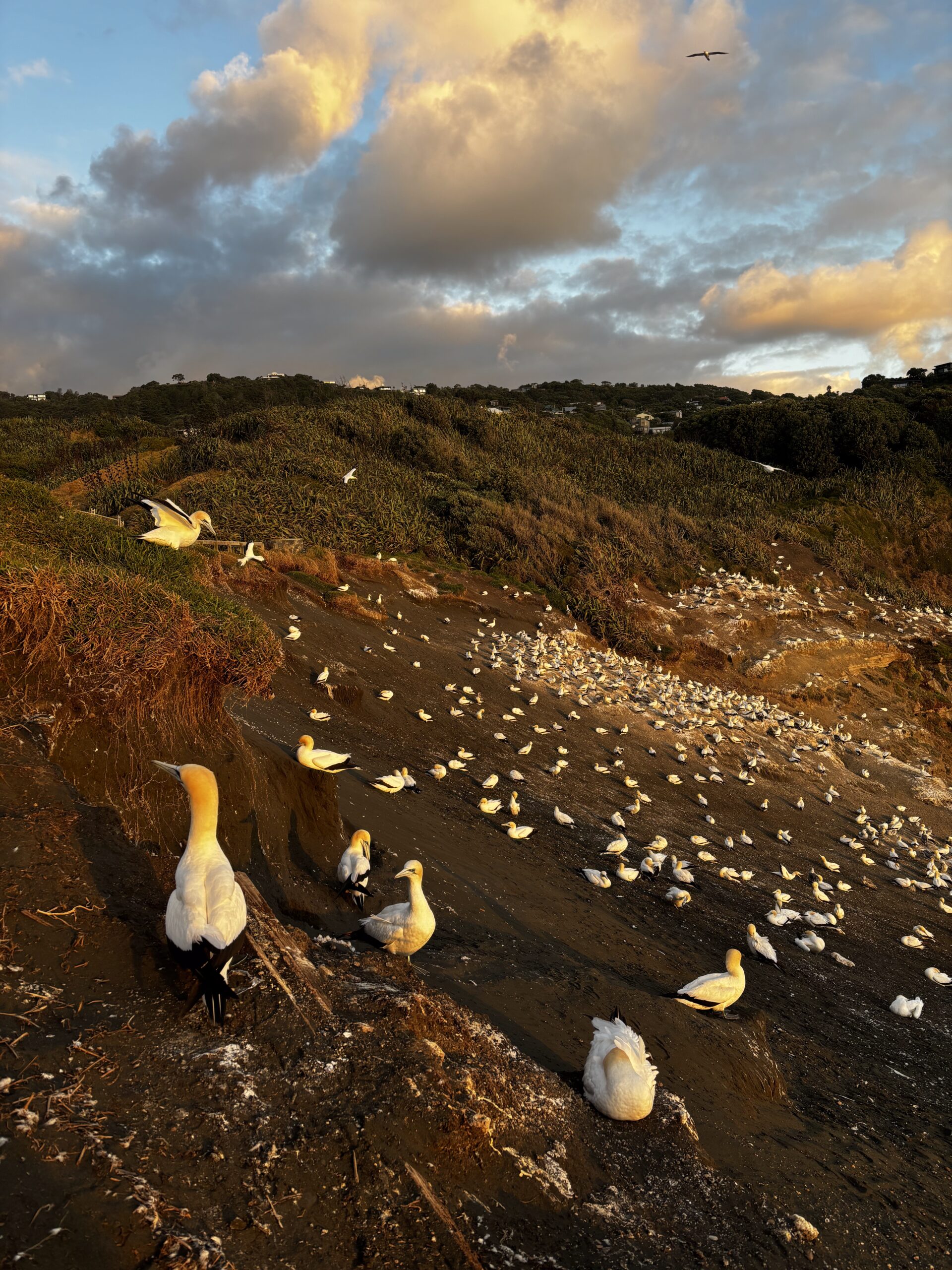
[EN]: How about you, Franz, are there bird songs or other characteristic sounds that you associate with your home in Lübeck?
FRANZ: An omnipresent sound in town: the bells from the many large churches! And blackbirds, magpies, and sometimes a cat in my backyard. Although I live in the city centre, it’s quite a quiet spot.
[EN]: Was there a “deal breaker” that tipped the balance away from the option you did not choose?
FRANZ: It was the prospect of having to teach in the way I was doing twenty years ago — before I shaped my current position. In combination with the new possibilities that were opening at my current institution– possibilities of new instruments and new collaborations.
ANDREA: Ultimately, one place offered me a “guarantee” and the other did not. So it was a bit like playing poker; I decided to keep my hand. Perhaps there was one other element in that I hadn’t had this much attention from the Stay option in all the years I had been working there. That kind of tipped me off, in that their leading administration should be looking forward, looking outward, anticipating change. If I was on their radar, why did I only hear about it when sudden changes came and I was leaving? Not really a sign of a secure place to work, in my opinion.
[EN]: Describe the physical environment and cost of living in the option you chose.
FRANZ: Lübeck is a small town that is close to a larger town, Hamburg, which offers many inspirations. It’s relatively cheap to live here; I have my own studio in my apartment.
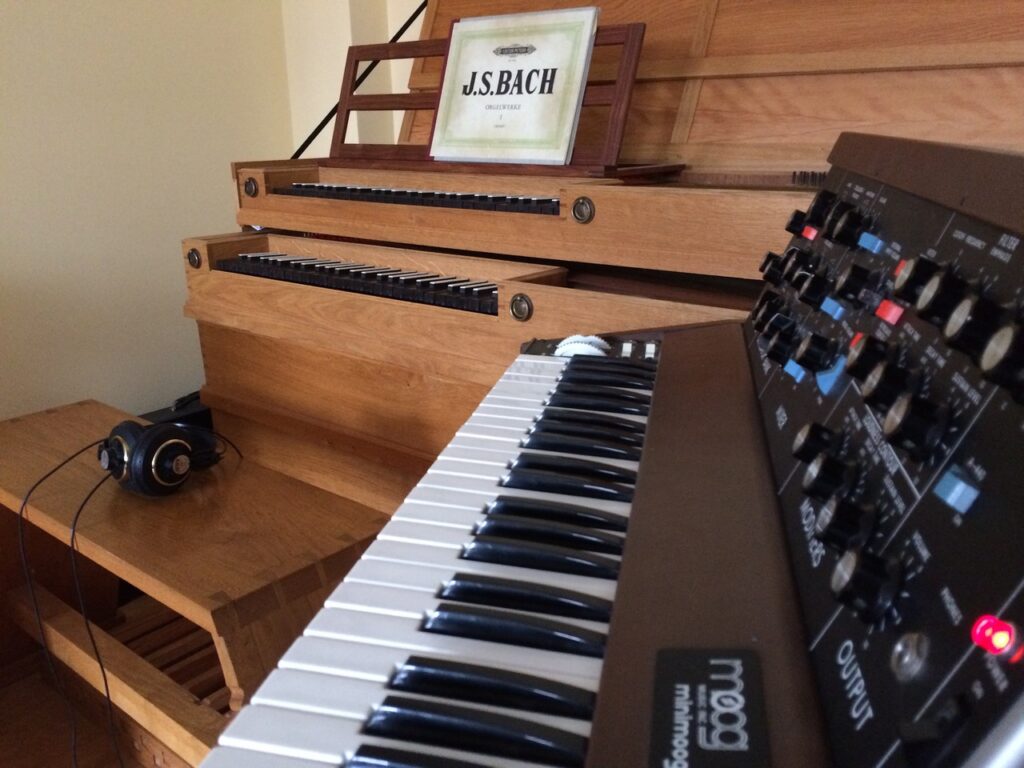
There are also several magnificent spaces and instruments in the neighborhood and foundations that support our work. I can do almost any project I want to do: concerts, symposiums, competitions etc. My students have the opportunity to do their projects and have an interested audience.
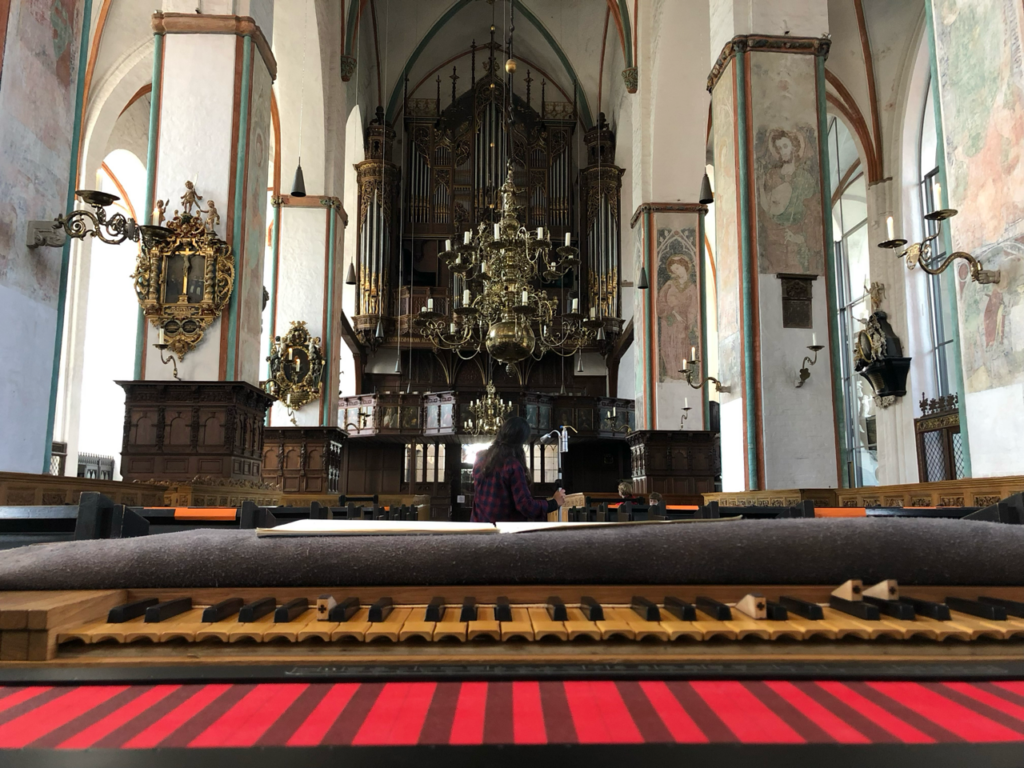
ANDREA: The physical living environment is a subtropical rainforest so I’m living amongst plants, birds and bugs that I have never seen before.
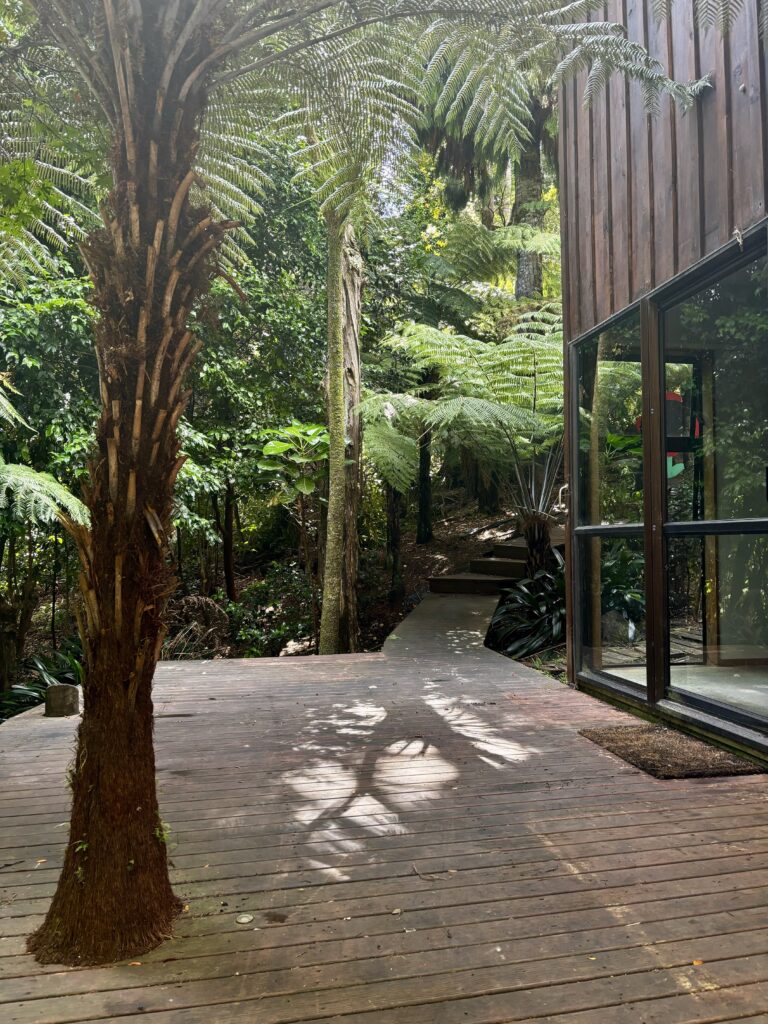
The university is in the city — it’s a campus but intertwined within the city — so I move from one building to another depending on the class, the tutorial, or my office.
The cost of living is very high and the method of getting to work is different – there are options of train, buses or car. All of these add to the cost of living, including gas, food, rent, etc. An example: a little block of American “Post-its” is $24.00 but the local brand is $7.00. Even still….!
[EN]: Now I’m curious to find out more about these bugs you’ve never seen before!
ANDREA: Here’s a photo to illustrate the bug situation – and yet, every time I question the nature of these critters, there is only one answer: “totally harmless”…okay, hmmm so they say!
[EN]: Can you find locally grown produce in the grocery store?
FRANZ:I´m very lucky to have a “biological” supermarket in the vicinity that sells many regional products.
ANDREA: Actually a surprising amount of vegetables and fruits are grown in New Zealand; when I shop I cannot believe how much variety is local. To compare the prices I think “local” farming is about the same and getting more expensive everywhere. But local tomatoes are very inexpensive in the summer as compared to when they are grown in the greenhouses in the winter. They are nearly 10 times the price from summer to winter.
[EN]: Are there any specialties associated with region where you live now?
FRANZ: Lübeck is a port city, and I learned about “Lapskaus” – an interesting dish served on the ships: mashed beef and mashed potatoes and beetroot (all becoming a mush), served with a pickled cucumber and a herring on top. Not bad but not my favorite. The food of my home country was one thing I really missed. So I learned to cook all those things – that became a nice hobby… For example, Faschingskrapfen! [Google translates this as Carnival Donuts]
ANDREA: One specialty that grows on trees in people’s yards: Feijoa (also grows in parts of South America). It’s tart and sweet…

[EN]: Similarly describe the physical environment, cost of living, quality of life in the option you did not choose.
FRANZ: The Go option, besides being my “home town” also happens to be a very inspiring city. On the down side, though it would have been more expensive; I’d have a significantly smaller apartment, not sure if I could afford a studio space. There was also less funding and fewer opportunities available, compared to what I have in my current position.
ANDREA: The physical living environment at my old institution was within a city where the cost of living was moderate. Like always, once you learn the methods and ways of moving around you can cut the cost. Quality of living was amazing – so many working artists in all fields, like a bouquet of venues for all different kinds of performances. Winters were long… but cozy venues and cafés helped issues of winter quite well.
[EN]: Describe your current students. Did the Stay and Go options offer you students with differing characteristics?
FRANZ: Stay: My students here are quite diverse, but they do share one thing in common: open-mindedness and a genuine curiosity about exploring new ideas.
This includes those students who arrive here with extensive training in and deep appreciation for historic music; they bring a long term perspective paired with an eagerness to explore the ways in which historic music connects with new musical horizons.
Go: I was told that my main purpose would be to teach “composed music playing” rather than explore new ways of making music.
ANDREA: It has been an interesting experience to learn about the new students I’m working with. In general, the students come from a larger portion of Asia and some Māori students, whereas the Stay option was mostly a mix of Canadian and American students. As I am only partly into the first semester, I can say that I have much to learn about what musical knowledge and experience they come from. There is a music language barrier that I didn’t have with the North American students – even what “bands” we know that we can relate to.
[EN]: What are some of your plans for the future? Do you think they could’ve happened if you had not made the choice you did?
FRANZ: My goal is to attract open-minded students and students from other areas of study, so I can interest them in my area to get fresh ideas.
ANDREA: My plan for the future is to maintain my artistic practice while I am teaching. In the Stay option, I was juggling like crazy! It was less productive than I would have hoped, as it took too long to complete projects and I felt like I was living about three lives in counterpoint.
From what I have learned so far in the Go Option, I am in a situation where I can build and help build a program through collaboration with my colleagues, which is creatively satisfying. When I reach the point where I am still being paid during more concentrated research months, I will feel more certain that my future goals will be achieved. Also, this teaching position is so fluid and adaptable to my skillsets, that I am more confident that my time will be used efficiently – teaching what one knows best is much easier than learning as you teach!
I am not sure if others have experienced this, but in the Stay option, getting assigned classes on topics that are slightly outside one’s range is quite challenging – this takes a great amount of time to prepare. In this new job so far, I am teaching what I know best, and this feels temporally and creatively very efficient.
[EN]: From my outside perspective, you both appear to be happy and very satisfied with your choice. What is one thing that you had to give up in exchange?
FRANZ: I gave up a dream: living in a larger, very charming city; joining the faculty of a larger department, distributing the responsibility on more shoulders; drawing inspiration from the culturally vivid surroundings.
On the other hand, here at MHL there are far more options for very interesting projects — more than I could ever do! Funds are available, people are curious and demanding new music, new ideas. We have a new progressive instrument in our surroundings and are planning another one.
Whereas at the Go option, the focus is more historic music and traditional instruments. Less interest in designing new instruments and instruments augmented by new technologies.
ANDREA: Yes I am very happy with the choice for all the life, career and financial reasons. However, the most excruciating thing I had to give up was my puppy – sweet little Luca. I had only had him for a year, and was enamored with this little guy. He made my life 150% happier, and yet, the cost of getting him to New Zealand was enormous as well as the concerns for his safety during travel (only option was in Cargo) – even if that was possible to afford.
After great deliberations, and enormous tears, I decided to leave him with my family, so I can visit him during breaks. As it turns out he is living a dog’s dream – running freely in the countryside with many dog playmates and constant affection. I couldn’t have provided that with a full time job and, while it still breaks my heart, I know it was the right thing. It has taken a couple months to stop binging on dog rescue series… but I am humbly acknowledging that life brings great highs with such fickle twists!
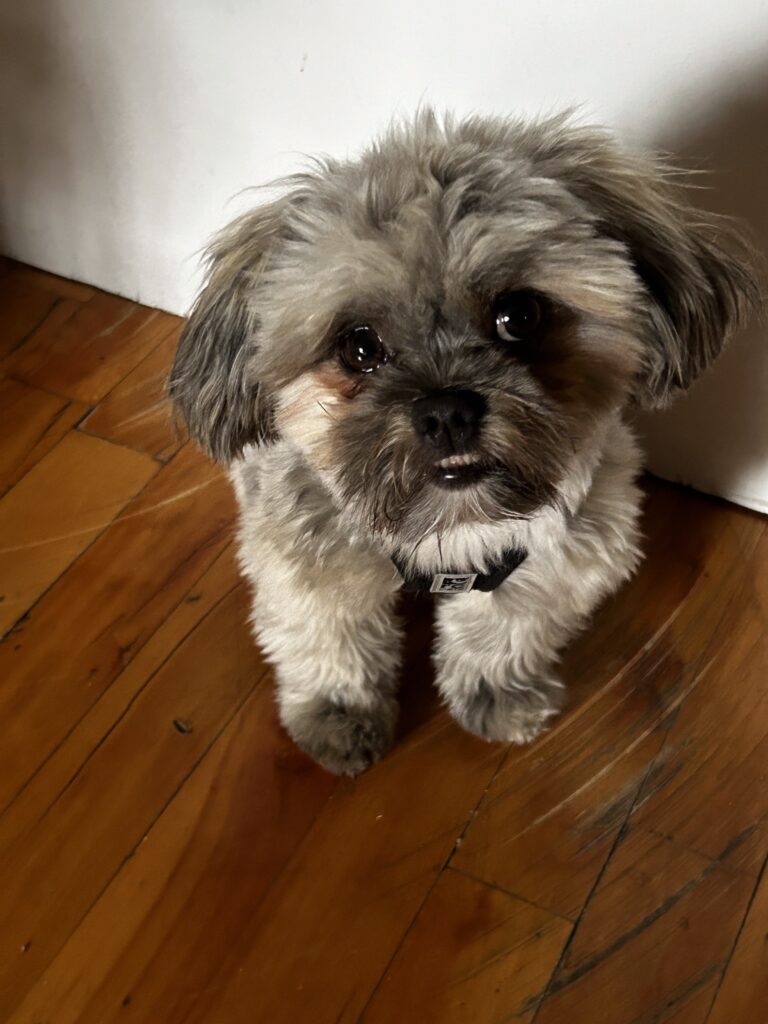
[EN]: What is one aspect of the place you chose not to go that you definitely won’t miss?
FRANZ: Being a “conventional” music teacher.
ANDREA: I won’t miss the anonymity of being a Sessional teacher [non-tenured contract faculty], and I won’t miss the fact that they were not accessing my best abilities with regard to leadership and innovation. I found ways to adapt but that’s a world away from where I am now.
[EN]: Compare the cultural climate between your Stay and Go options. Was there a culture-shock in moving to the new place (or would there have been some culture shock if you had not chosen to stay in your current place)?
FRANZ: I don’t think there would have been a culture shock as I know the place very well. But I might have felt somehow restricted when compared with my current position, as the Go option is a more traditional, less “open” scene.
ANDREA: The culture shock so far was to “take 10 steps back”. If you want something to happen, don’t use the words “asap” or “today”. Just take 10 steps back – when convenient, sometime, when available. It’s a bit like a small town vibe. Also it’s not cool to be “the tall poppy”, or singled out for doing something unique that sticks out from the group.
[EN]: What’s something you most look forward to learning in the coming year?
FRANZ: Being a Kyma-teacher. I led my first Kyma seminar yesterday – and I was a bit overwhelmed by the amount of interest; so many students registered that it’s a bit crowded in our small studio! It was so pleasing and rewarding and I felt so comfortable during the seminar; I really love working this way – digging into the many layers of Kyma and thinking of transforming and creating all kind of sounds!
And I have fun in thinking about things we can do and explore during the workshop and how I can prepare so things remain “digestible” by the students. The student backgrounds range from composers who worked already with electronics, a pedagogy student who challenges himself in doing new / unexpected things, and of course my students from improvisation and church music.
ANDREA: When there’s a break, I look forward to doing some “Tramping” – is that a word used elsewhere? Long treks and camping in the beautiful mountains, waterfalls, thermal rivers…
[EN]: What was the most surprising thing you learned about yourself during this decision-making process? What is your “mission” or sense of purpose? How does your decision mesh with and support your longer term goals?
FRANZ: “Know yourself”: this quote from the temple of Delphi accompanies me since I learned it in high school. Turns out, it’s still challenging to know oneself.
My sense of purpose: bringing fresh air into our scene, making connections to colleagues that have similar ideas. My current surroundings support this goal.
ANDREA: My sense of purpose is to live a healthy and creative life, a balanced life and learning to be more in the present. To be generous, share laughter with friends and work hard toward creative realizations. To push the limits of my abilities.
[EN]: Did your perception or definition of “success” evolve at all during your deliberations? (For example, did you have a definition for success when you were a child that you realized is quite different now?)
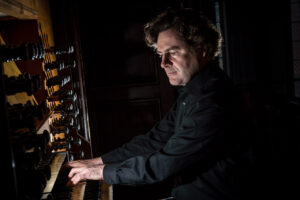 FRANZ: When I was a child and a young adult, success meant I’d play (virtuoso) compositions written by (dead) people — being admired for being able to play difficult music.
FRANZ: When I was a child and a young adult, success meant I’d play (virtuoso) compositions written by (dead) people — being admired for being able to play difficult music.
Now I want to make music that affects my audience, to find sounds or concepts that are unique and that contribute something new, add another aspect. Success is now is if I manage to inspire other people, to trigger their imagination.
[EN]: Did you experience anxiety during the decision process? Do you have any advice for others on how to manage anxiety during times of great uncertainty?
FRANZ: There was anxiety about choosing the wrong option and feeling frustrated afterwards. I’ve met several people who are very frustrated because they decided to go somewhere or just stayed where they were. But I came to understand that these people might have been frustrated either way: you cannot run from yourself, you have to make the best out of your situation at any time.

ANDREA: I couldn’t have known what it was going to be like to take the leap, but my intuition said – just go! Even upon first landing in Auckland, there were way too many chaotic life changes and cultural shifts to be sure that the decision was right.
But, given a little bit of time, I am finding that my “sense of purpose” can be found in the most unusual places – the sense of humor here is creative, sitting at dinner tables often contains a kind of timelessness – humor, generosity and kindness abound.
[EN]: How would you describe the leadership style at your current institution compared to the other option?
FRANZ: At my current school, the leadership style is quite straightforward and “goal oriented”. Although the style of the “Go option” is less transparent, this is due to a cultural difference and the fact that it is a much larger institution. At the “Go option” people tend to be more pragmatic (you often hear, “that’s just the way it is”).
ANDREA: The leadership style in my new situation feels more as if they have “room to spare” – both intellectually and cooperatively. (It has been somewhat like when you feel relaxed as a guest in someone else’s home.) As an example: the leadership style of the current institution said to me: “let’s all fail together for the first year”. This inspires me – I let down the pressures of their expectation; I let down my guard of what to expect; I focus on trying to do what I know best and let’s just see if it works all together, with myself, and with the students. I was allowed to experiment with the content/style of teaching and surely will be surprised with the outcome. Brilliant!
I cannot draw a completely fair comparison to my previous situation, as I was in a different job role. However, when attending meetings that were geared toward concepts of collectivity, my ideas were played down at times with the excuse of “that’s the way things are” and “the way things have been.” There wasn’t “room to spare”.
Somehow the leadership had developed a large number of sessional teachers and only a few full time teachers who made the decisions, etc. This is a balance that might never be healthy – having a lack of security for the majority of people. Something wasn’t balanced and yet it would be hard for me to know exactly where that came from.
I felt like I had to keep mindful and invisibly do my part. That being said, as individuals, it was filled with the most talented, encouraging, and unique people.
[EN]: Do you have advice for someone else facing a similar decision?
FRANZ: Talk to your potential new colleagues and students to get insights into what’s going on “under the hood”, learn about the surroundings.
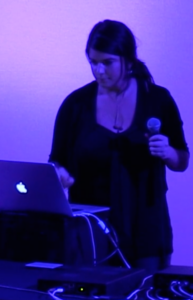
ANDREA: I cannot really advise, as there are no two situations exactly like another… but from my own life choices, change has contributed to both the greatest times of my life as well as the most difficult times in my life.
A funny part of the “difficult times” is months of not knowing how to do anything that you normally know how to do. A friend of mine described this as the “yoghurt” phase. When they moved from Israel to Vancouver, they couldn’t find yoghurt in the grocery store, and when they finally did, it was separated from all other yoghurts because it was “organic”, and then there were all different kinds of organic yoghurt! This took them an hour to sort it out.
Since I moved, every day of the last month there are hours spent not knowing how to do the simplest things. The more intense “difficult times”, is that your community is gone and new friendships need to be rebuilt that takes time and experiences. It’s hard during that phase where you have to rebuild.
But the greatest parts of change are that I am learning Māori research methodologies, I am at the beginning of a journey into academia, colleagues are from a whole new part of the world, and there are new bird songs and huge beaches! Given some time, the hard parts of change will become smooth, and all the great things about change will create stories and relationships for a lifetime.
[EN]: Do you have advice for an administrator or leader who is trying to persuade someone to join a new venture? Or trying to persuade someone to stick with them and not leave?
FRANZ: Don’t be merely pragmatic. Learn about the ideas and goals of the person you’d like to recruit (or retain).
ANDREA: My advice for administrators in terms of persuasion: show enthusiasm, deliver the most respectful employment procedure, and be genuinely enthusiastic about the person.
My advice for administrators in general (may I just say? ):
– For everyone who applies to the job opening who does not make it to the second or final round – email them all and personally if possible. It takes people many hours, or even days, to prepare and for their referees to write for them. It’s unreasonable that institutions “don’t have time” for this and it doesn’t look good from the outside.
– For everyone who doesn’t make the final pick after the in-person interviews, write to them individually to thank them for their specific energy and time.
– For those chosen, try to get the bureaucratic process in motion and make sure they know that immediately! When I found out that I was chosen, I found out almost literally on the spot. It was so exciting, the adrenaline of the adventure, the interview and having the result connected to that feeling was part of my persuasion to take the opportunity. It didn’t become disconnected with too much time passing.
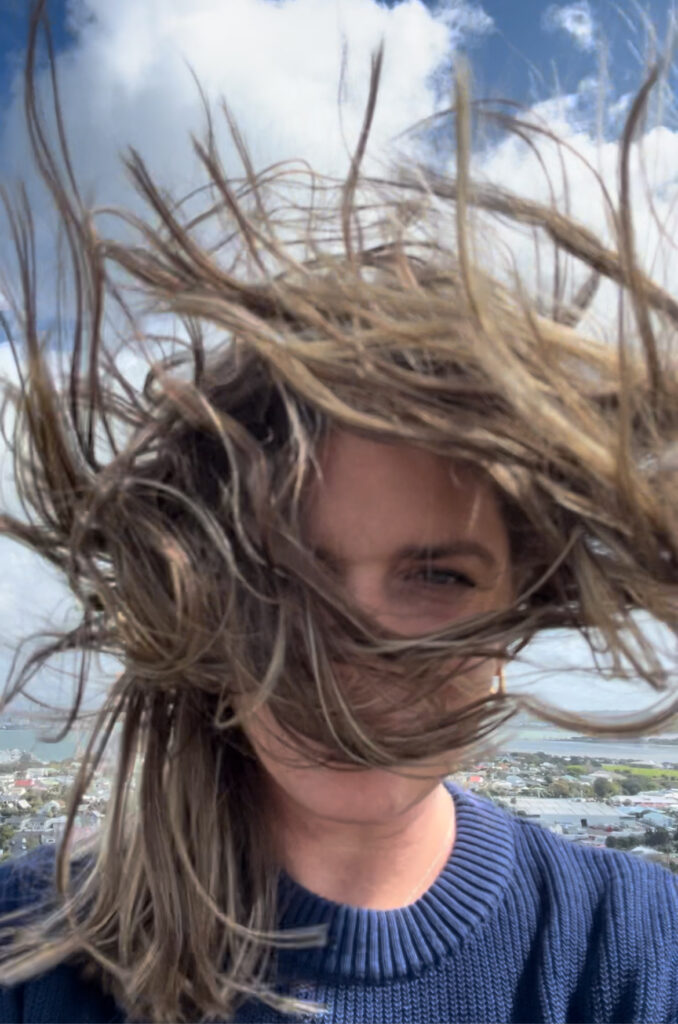
Otherwise, one can return home after the interview, and months later think, well even if I was chosen, maybe I would rather keep my life as it is. Also the months passing while you wait to find out you are not chosen doesn’t really reflect well.
[EN]: Did this process alter the way you see yourself in the professional community? Did it clarify the role you see yourself playing within your creative / professional network?
FRANZ: It clarified my perspective: I’m putting more effort into developing a new style of music-making in my area. I’m also looking more for musicians outside of my normal scene: musicians and artists from other fields.
And some new opportunities are coming up, independently of my decision (organizing a new competition, introducing a new summer academy).
[EN]: In the ideal case, how would you like your career to evolve over the next 5-10 years? What will you be doing differently 10 years from now? How will the world be different?
FRANZ: Ideally, the new master degree program that I introduced last year is going to continue to evolve and become my main focus.
ANDREA: Ideally, I would love to have a more international experience through conferences, performances, and festivals. It’s exciting to think about new parts of the world that I have not previously engaged with before – such as everywhere in Asia, the South Pacific and South America. I would love to develop a solo practice, providing a constant stream of creativity, so that I can be self-sufficient and share my work easily through international travel.
[EN]: What is the one impact you would most like to have on your field? What would you like to be known for?
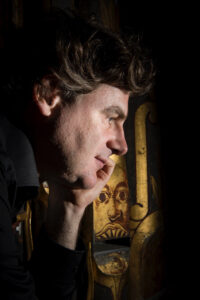 FRANZ: I’d like to be known for making fascinating music; bringing new ideas into the scene by creating new music for my instrument, introducing a new education for the creation of new music, and for coming up with new ideas for new instruments.
FRANZ: I’d like to be known for making fascinating music; bringing new ideas into the scene by creating new music for my instrument, introducing a new education for the creation of new music, and for coming up with new ideas for new instruments.
 ANDREA: I would like to be known for having some impact on ways we think and play with our human voices. I would also like to be known as a teacher who is aware of their bias and positionality, guiding people to their own unique imaginations and realizations by giving skillsets that help them achieve this, but not getting in their way with my own imagination and aesthetics.
ANDREA: I would like to be known for having some impact on ways we think and play with our human voices. I would also like to be known as a teacher who is aware of their bias and positionality, guiding people to their own unique imaginations and realizations by giving skillsets that help them achieve this, but not getting in their way with my own imagination and aesthetics.
[EN]: Each of you is a classically-trained ‘acoustic’ performer (Franz on pipe organ, Andrea on voice). Please tell us some of the reasons you choose to use Kyma for your live, electronically-augmented performances. Why and how do you use Kyma instead of (or in combination with) the many other options available for live electronics in performance. Do you think of your instrument together with Kyma as a new instrument in its own right? Do you think of the electronics as “an enhancement” to the live acoustic performance? Or do the two become entangled in ways that make this some new kind of art form?
FRANZ: I’ve experimented with a variety of equipment: synths, effect boxes and software. None of them was satisfying, because the analog instrument and the electronics differed in sound quality. I was looking for a high quality equivalent to my instrument and found it in Kyma. I’ve heard so many times from the audience, that they could not tell a difference between the analog instrument and Kyma. It all sounds like a large / augmented instrument. This was and is my main goal when combining classical instruments with electronics.
ANDREA: During my doctoral studies, I focused my thesis entirely on voice and electronics. This became my instrument. Since then, I cannot think of singing without Kyma because it changed my way of singing and the purpose of using my voice. I also compose works for voice and chamber ensembles that are musically fused with the kind of processing involved with the voice and electronics. So it’s really inseparable for me.
I began learning Kyma so long ago, at the Institute of Sonology, that it feels natural to me to think “in Kyma” and therefore my creativity is fluid in this environment. The sound quality has always moved me as much as acoustic sound, so when learning electronics I could hear everything so clearly. And of course, the live electronic processing that my voice-and-imagination required, was only possible with this much real-time-computation.
I wish I had done a postdoc because I felt like I had only just begun finding my art form… all the independent research I did since then through grants and collaborative projects was amazing but more creation rather than research. Hopefully, in this new position I will finally have the time and space again to push further toward the vision I had just begun to realize: a voice that is data, that is music, that is connected and dislocated from the body, that is fused with other instruments, and that its quality is malleable. I look forward to keep trying!
Andrea and Franz — two individuals living in different parts of the world. One chose to Stay and one chose to Go, but both chose to collaborate with colleagues who champion progress over tradition. Though their paths diverged, Andrea and Franz have arrived at the same destination: environments where innovation and forward-thinking prevail over the attitude of “that’s the way it’s always been”.
[EN]: If someone’s interested in studying with you, where should they begin?
ANDREA: They could apply to the University of Auckland, Creative Practice in Composition.
FRANZ: We have a website for our Master’s of improvisation which could be described as “master for music creation” – with a focus on organ and live- electronics; plus we have a youtube channel which is constantly growing.
[EN]: If someone would like to propose a collaboration or invite you as a guest composer / performer, how can they contact you?
ANDREA: Here’s my website: and email
FRANZ: I have a website with contact info, a concert calendar (will update this soon) and descriptions of my projects.
